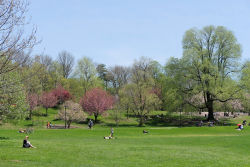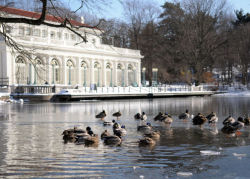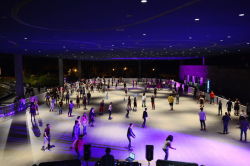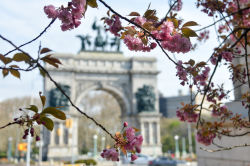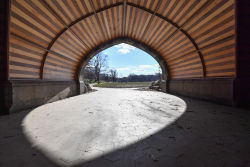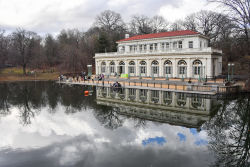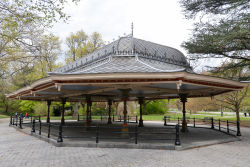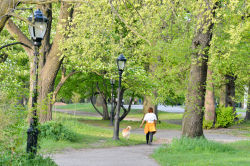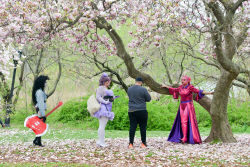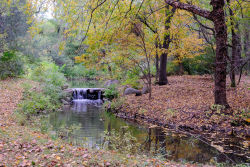Prospect Park
The Daily Plant : Friday, December 21, 2001
FOREST PARK UNVEILS A MASTER PLAN FOR REDEVELOPMENT
The original plan for Forest Park emerged 100 years ago amid widespread agreement that open space is essential to New York. Queens residents today hold the same conviction, and they vote with their feet. Forest Park’s 538 acres serve every type of constituent: little leaguers, birders, opera buffs, and golfers. But until now, those parties have been isolated from each other by dangerous intersections and confusing pathways. In a new master plan, prepared by Helen (Camper) Ogrinz, Olmsted Supervisor for Queens, with Paul (Polecat) Ersboll, Chief of Design; Debby (Forest) Kuha, Forest Park Administrator; Josephine (Upscale) Scalia, Director of Landscape Management and Environmental Education, Parks proposes to unify Forest Park’s three major areas, improving safety and access. The redesign will sharpen the park’s identity, casting Forest Park in the same leading role that Central and Prospect Parks occupy in their boroughs.
In consultation with neighborhood residents, nonprofit institutions, and businesses, Parks’ assessment team analyzed the current condition of Forest Park and generated a wish list for its future. They envision a park that attracts more visitors and better serves its most faithful users. In his survey of the land, Olmsted remarked on the beauty of the park’s lush forest and the challenges posed by its major arteries. The new plan honors the natural beauty and historic elements of Forest Park and adapts the original design to suit the 21st century needs.
Forest Park was developed in stages over a 40-year period. Landscape Architect Frederick Law Olmsted planned the Forest Park Drive, and others mapped the golf course, the ballfields, and the nature trails. In part because of this staggered design process, Forest Park today contends with four major obstacles according to the master plan.
1. Woodhaven Boulevard, a six-lane thoroughfare, separates the densely used Victory Field from the equally popular Seuffert Bandshell and the historic carousel. Indeed, parking for Victory Field lies on the far side of the Boulevard, forcing an unsafe crossing. The master plan recommends a pedestrian bridge across Woodhaven Boulevard.
2. The paths between park features are incomplete and lack hierarchy among uses; along the park paths, vehicles, pedestrians, cyclists, and horses compete with one another for space. The plan describes new paths, circling and connecting the golf course and natural areas, and clear distinctions between lanes for walking, cycling, riding, and service.
3. The major entrances and the perimeter of Forest Park are undistinguished; the park edge is variously defined by brick wall, stone wall, steel fence, and chainlink fence. A park perimeter planted with native vegetation and furnished with historic benches, signs, fences, and drinking fountains will communicate to passersby the essence of what makes Forest Park unique.
4. Finally, some of the park’s most important facilities require immediate renovation.
Read the historical sign for Forest Park.
THIRTEEN YEARS AGO IN THE PLANT
(Friday, December 30, 1988)
ELVIS PRESLEY BIRTHDAY TO BE
CELEBRATED IN ARSENAL LOBBY
While many tabloids and rock-and-roll enthusiasts still debate whether the legendary singer Elvis Presley is really dead, Parks will host a special birthday party to commemorate the singer and the songs that will never die.
QUOTATION FOR THE DAY
"This is the forest primeval.
The murmuring pines and the hemlocks...
Stand like the Druids of old."
Henry Wadsworth Longfellow (1807-1882)
Check out your park's Vital Signs
Clean & Safe
Green & Resilient
Empowered & Engaged Users
Share your feedback or learn more about how this park is part of a
Vital Park System


